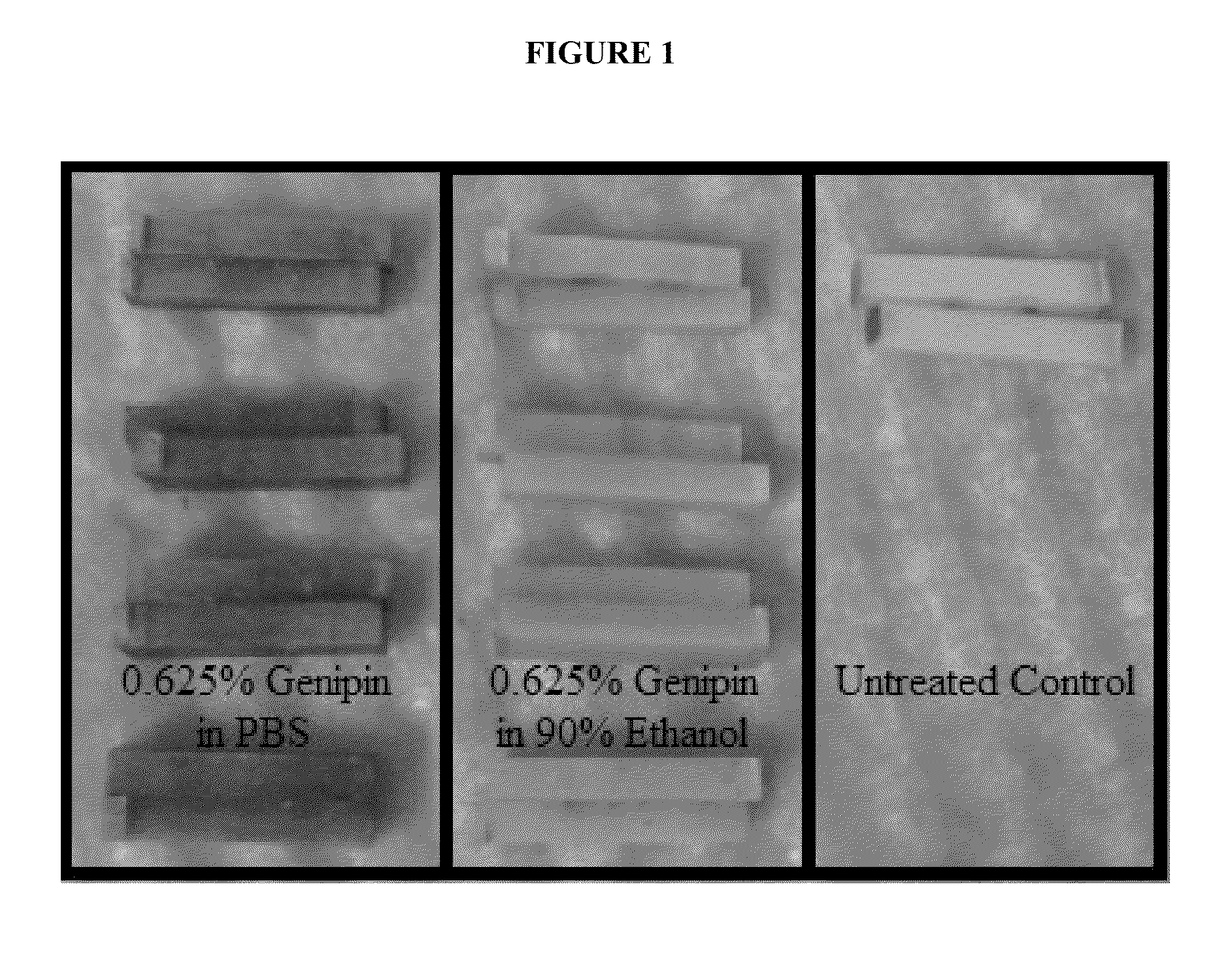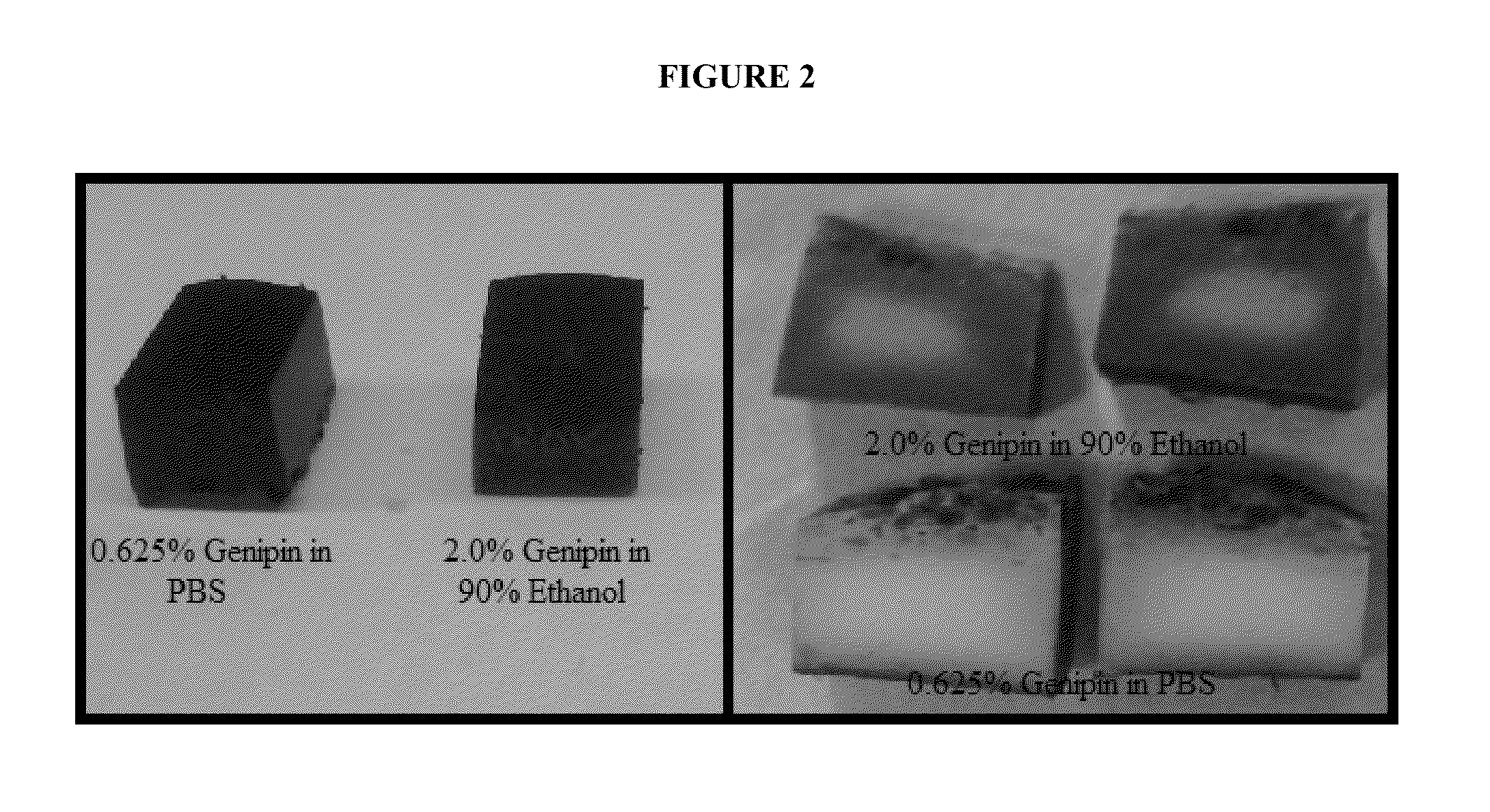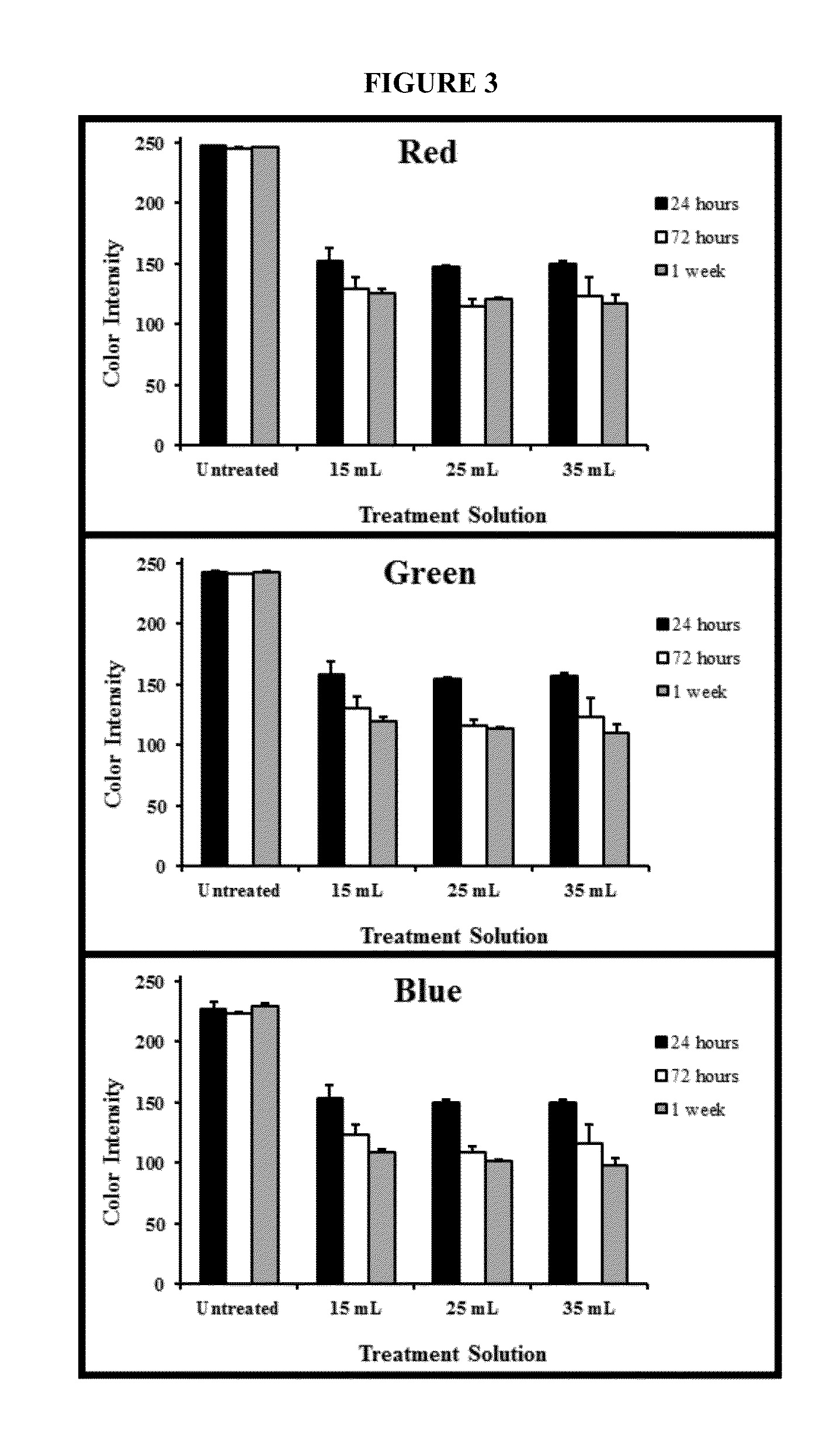Sterilization of proteinaceous biomaterials and tissues with genipin
a proteinaceous biomaterial and tissue technology, applied in the field of sterilizing collagen-based hard and soft tissues, can solve the problems of not sufficiently concomitantly strengthening or sterilizing tissues without toxic effects in medical use, and achieve the effects of less cytotoxic, less cytotoxic, and greater bending modulus
- Summary
- Abstract
- Description
- Claims
- Application Information
AI Technical Summary
Benefits of technology
Problems solved by technology
Method used
Image
Examples
example 1
Bone Penetration by Genipin, Part I
[0092]To determine how well genipin penetrates cortical bone, a bovine femoral diaphysis was obtained from the local butcher. A Biro 11 Retail Meat Saw (Biro Manufacturing Company, Marblehead, Ohio, USA) was used to cut the femoral diaphysis into halves. The proximal half was then cut into thirds; the anteromedial third was further bisected longitudinally and one of the two longitudinal segments was used in this research. An Ecomet 6 Variable Speed Grinder-Polisher (Buehler, Lake Bluff, Ill., USA) was used first with Beuhler CarbiMet 2 special silicon carbide grinding paper Grit 240 / P280 to flatten and smooth the periosteal and endosteal surfaces to a final width of 4.5-5.0 mm. This was further polished using Grit 400 / P800 grinding paper. An Isomet 1000 Precision Sectioning Saw and Series 15 HC Diamond (Buehler, Lake Bluff, Ill., USA) wafering blade were used to make slices 1.4-1.6 mm thick and 10 mm long; thin slices were initially cut since it on...
example 2
Bone Penetration by Genipin, Part II
[0097]After determining that 0.625% genipin in PBS and 90% ethanol fully penetrated 1.5 mm thick slices of bovine femoral cortex (see Results) the goal was set to determine how deep genipin can penetrate using thicker samples. Bovine femoral cortical bone from the proximal meta-diaphyseal region were stripped of periosteum and soft tissue from the periosteal surface and bone marrow and the majority of trabecular bone from the endosteal surface. The length and width of the specimen were cut such that radial cortical thickness would be the narrowest dimension. Using methods described in Part I, specimens were cut to 14.8 mm long×12.2-12.7 mm wide. Since genipin is more soluble in ethanol than in PBS (Genipin Product Information, Cayman Chemical, Ann Arbor, Mich., USA), one specimen was placed in a 25 mL solution of 0.625% genipin in PBS and one specimen was placed in 2.0% genipin in 90% ethanol. Bones were treated for one week after which time they ...
example 3
Genipin Mass: Volume Effect on Bone Color Change
[0100]To assess whether sufficient genipin is provided at the mass: volume ratios was employed, the effects of varying the genipin mass:bone volume ratio on color change was measured. The second anteromedial segment cut in Part I of the bone penetration pilot research study was used here. The bone segment was polished and sliced similarly to create 12 specimens with average dimensions of approximately 37.4 mm×2.7 mm×0.5 mm. A total of 12 segments were cut (N=3 per group).
[0101]A 0.625% genipin in PBS solution was prepared because the bovine specimen demonstrated more intense color changes at that concentration in PBS versus in 90% ethanol. In Part I of the bone penetration study the ratio of genipin in PBS to bone volume was 1 mL (6.25 mg genipin): 5.4-9.0 mm3. Genipin solution volumes were calculated to approximate these upper and lower volume ratios; in this research 15 mL, 25 mL, and 35 mL of 0.625% genipin in PBS were used. A 25 mL...
PUM
| Property | Measurement | Unit |
|---|---|---|
| Temperature | aaaaa | aaaaa |
| Temperature | aaaaa | aaaaa |
| Temperature | aaaaa | aaaaa |
Abstract
Description
Claims
Application Information
 Login to View More
Login to View More - R&D
- Intellectual Property
- Life Sciences
- Materials
- Tech Scout
- Unparalleled Data Quality
- Higher Quality Content
- 60% Fewer Hallucinations
Browse by: Latest US Patents, China's latest patents, Technical Efficacy Thesaurus, Application Domain, Technology Topic, Popular Technical Reports.
© 2025 PatSnap. All rights reserved.Legal|Privacy policy|Modern Slavery Act Transparency Statement|Sitemap|About US| Contact US: help@patsnap.com



